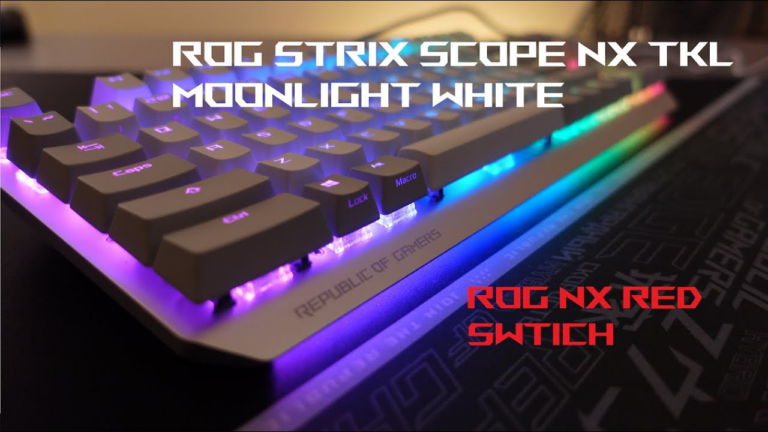Types of Keyboards – Choose The Right One (2024)
The days of the good ol’ typewriter going click-clack are long gone, and the feeling of our fingers flying across a computer keyboard is very satisfying.
But how do you know which keyboard is best for you?
After all, there might be the correct types of keyboards suited for your work that you don’t know yet.
This article will dive deep into the world of keyboards, specifically their diverse types and purposes.
So, let’s look at them one after the other.

Various Types of Keyboards That You Can Choose
1. QWERTY Keyboards
A QWERTY keyboard is a type of computer keyboard that uses a standard arrangement of keys.
It is named after the first six letters on the top row of alphabetic keys. The QWERTY layout is the most common keyboard layout used in the English-speaking world.
QWERTY is the most widely used keyboard layout in the world.

It was designed to allow users to type quickly and accurately without jamming the mechanical keys of typewriters. The layout is designed to be comfortable and familiar.
It allows users to quickly find the right keys without thinking too hard. QWERTY keyboards are also more ergonomically designed than other layouts.
They are easier on the hands and wrists.
Pros:
- Increased typing speed, accuracy, and efficiency
- Ergonomic design
- Familiarity
Cons:
- Slow to learn
- Limited customizability
2. Wired Keyboards
Wired keyboards are connected to a computer through a wired connection, usually a USB port. They are usually more reliable than wireless keyboards.
They don’t require batteries or a wireless signal. Wired keyboards are also typically cheaper than wireless keyboards.
Many people still prefer wired keyboards because of their reliability. Wired keyboards are directly connected to the computer.
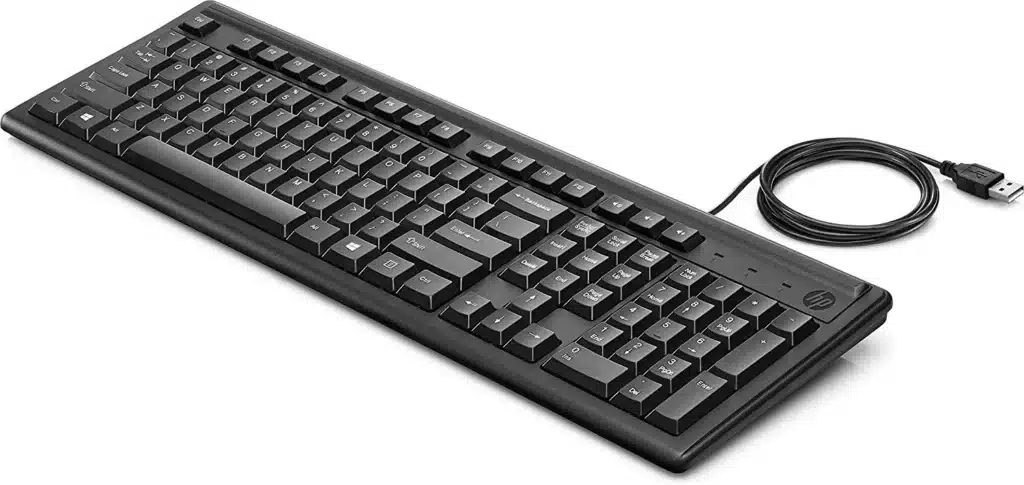
This eliminates interference from other wireless devices. Also, typically, they require less power.
Pros:
- More reliable connection
- Faster response time
- Easier to set up
Cons:
- Limited mobility
- Cable clutter
- Limited range
3. Numeric Keypads
Numeric keyboards have number keys and other keys associated with numbers.
This includes mathematical symbols, function keys, and arrows. They are mainly used to input numbers into a computer quickly and accurately.
Numeric keyboards are used for entering data that consists of only numbers. This can be monetary amounts, dates, serial numbers, and other numerical data.
They are also used in computer programming and fields that need numerical input.
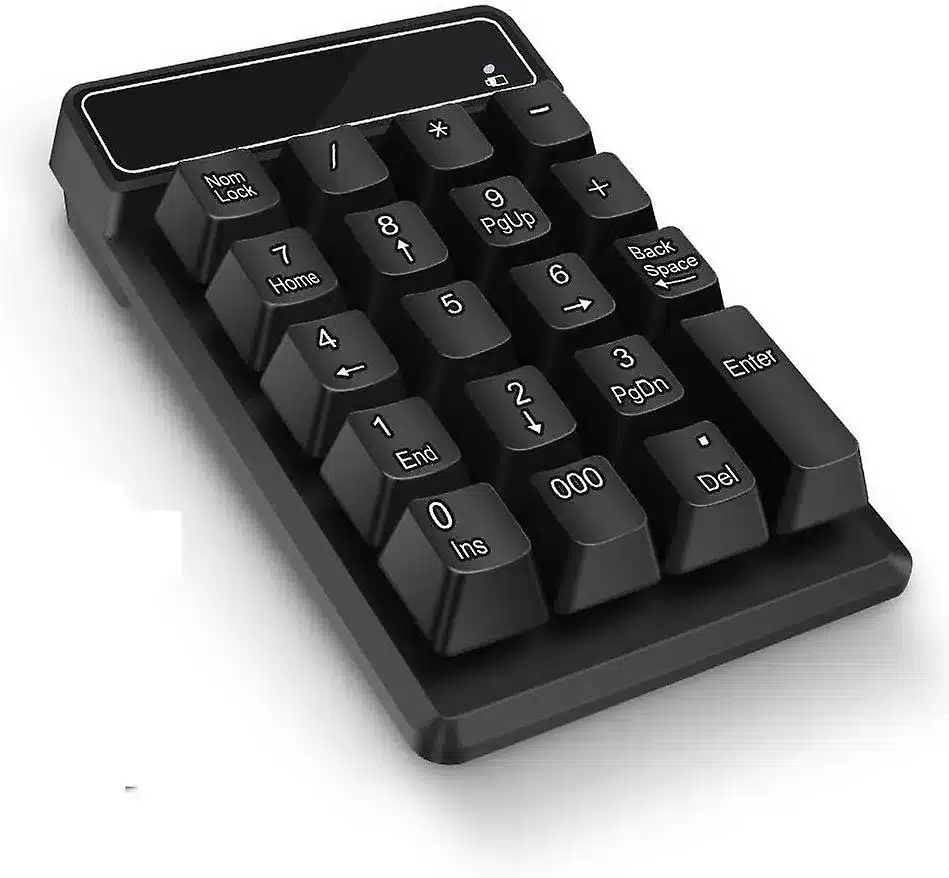
Numeric keyboards are typically more efficient than standard keyboards for entering numerical data.
This is because they have dedicated keys for each number. This eliminates the need to press the “shift” or “fn” keys to enter a number.
Numeric keyboards are often more ergonomic than standard keyboards. The placement of the numeric keys is more consistent and, thus, easier to learn and remember.
Pros:
- Allow for faster data entry
- Make entering long sequences of numbers easier
- Help reduce typing errors
Cons:
- It can be not easy to learn
- It can be uncomfortable to use for prolonged periods
- Some models are not compatible with all software programs
4. Ergonomic Keyboards
During extended typing sessions, ergonomic keyboards reduce strain on the hands, wrists, and arms. They are designed with a split-key layout.
It encourages the hands to remain in a more natural position. Ergonomic keyboards may also have adjustable wrist pads to reduce strain further.
The shortcut keys help increase typing speed and accuracy.
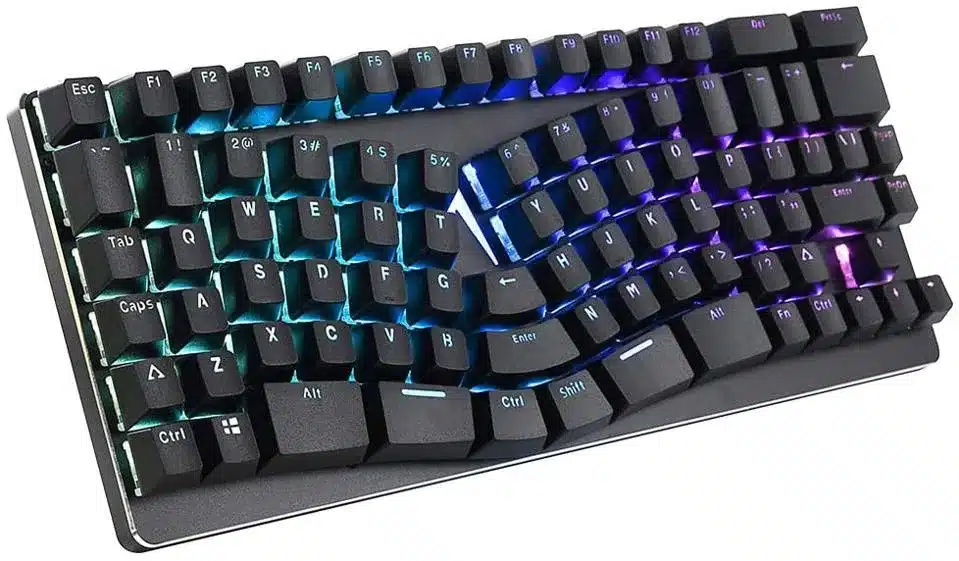
Ergonomic keyboards are designed to reduce strain and improve comfort while typing. An ergonomic keyboard can help improve typing speed and accuracy.
Pros:
- Reduce the risk of developing musculoskeletal disorders
- Designed to be comfortable
- Often feature a split-key design that helps to keep your wrists in a neutral position.
Cons:
- Expensive
- Takes time to get acclimatized to
- Not compatible with many OS or devices
5. Wireless Keyboards
These keyboards use radio frequency (RF) or Bluetooth technology to communicate with the computer.
They allow users to type without being tethered to the computer with a cord.
Wireless keyboards offer convenience and portability that wired keyboards cannot. They can be used from anywhere in the room.
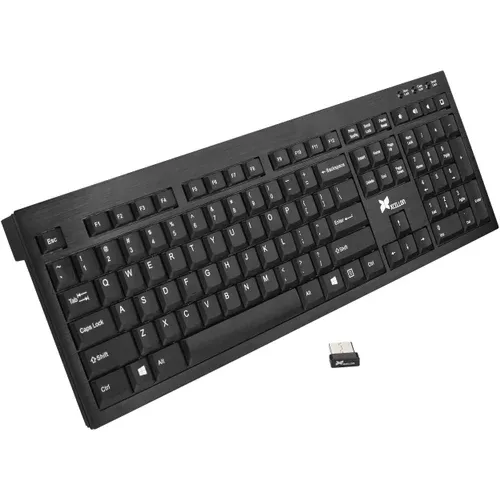
They do not require the user to be bound to a desk or station and, they are easy to connect. Wireless keyboards are portable, allowing for easy transport.
Pros:
- High accuracy and responsiveness as the keys are directly connected to the computer
- No need for batteries/charging
- More reliable than wireless keyboards
Cons:
- Short cord limits flexibility in setup
- Can be bulky and take up more space
- Cables can be easily damaged or tangled
6. USB Keyboards
USB keyboards are connected to a computer via a USB (Universal Serial Bus) port.
USB keyboards allow users to access their computers and input data quickly and easily. USB keyboards offer a wide variety of features and options.
This includes multimedia keys, programmable keys, and other special functions. USB keyboards are becoming increasingly popular. Their convenience, affordability, and reliability are commendable.

USB keyboards are becoming increasingly popular due to their convenience and flexibility. They are much easier to transport than traditional keyboards.
They can be used with a wide range of devices. Many USB keyboards feature additional features.
This can be programmable keys, multimedia keys, or backlighting.
USB keyboards also use less power than traditional keyboards. They can be plugged into any USB port, making them ideal for portable computing devices.
Pros:
- Very easy to install and use
- More ergonomically designed than traditional PS/2 keyboards
- Multiple devices to be connected to the computer
Cons:
- More expensive than PS/2 keyboards
- Not as compatible with older computers
- Requires an additional USB port for each device
7. Bluetooth Keyboards
Bluetooth keyboards use Bluetooth technology to communicate with devices.
They allow users to type on a physical keyboard wirelessly. They do not have to be connected to a device like a traditional corded keyboard.
Bluetooth keyboards are an excellent choice for users who do not want to deal with cords or wires. They are also ideal for users who need to type on multiple devices.
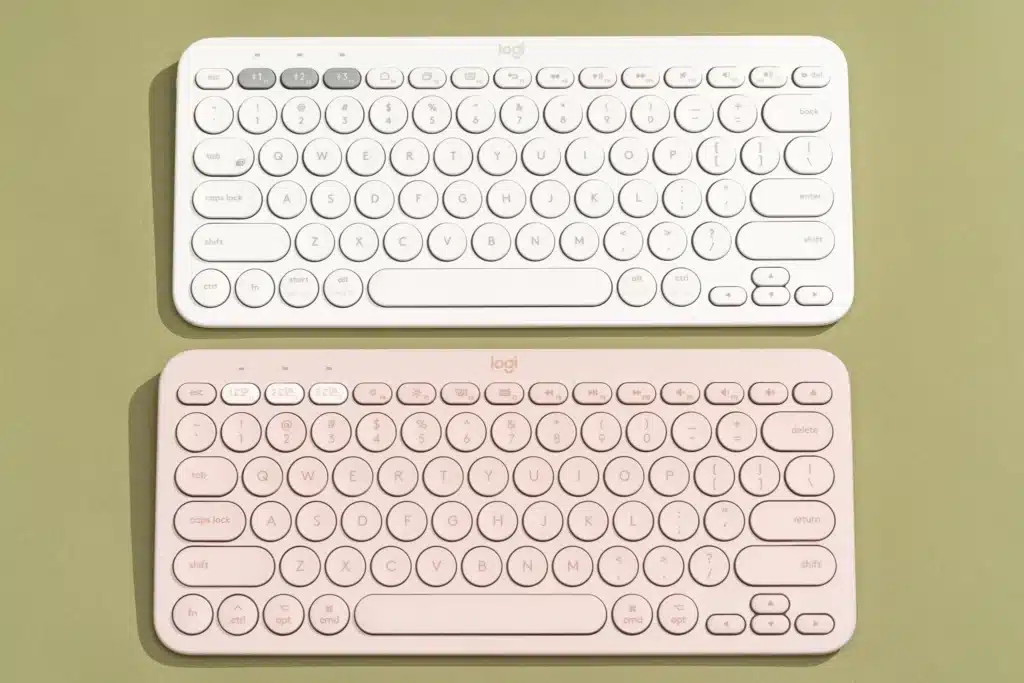
Users can easily switch between them without needing to use separate keyboards. They are often more affordable than wired keyboards.
This makes them an excellent choice for budget-minded users.
Pros:
- Easy to set up
- Lightweight
- Versatile
Cons:
- Has a definite battery life
- Limited range
- Compatibility issues
8. Magic Keyboards
Magic keyboards are a type of wireless keyboard designed and produced by Apple.
They feature a rechargeable battery and a full-size keyboard with a numeric keypad. Magic keyboards also have a variety of other features.
This includes special shortcut keys, a built-in trackpad, and backlit keys.
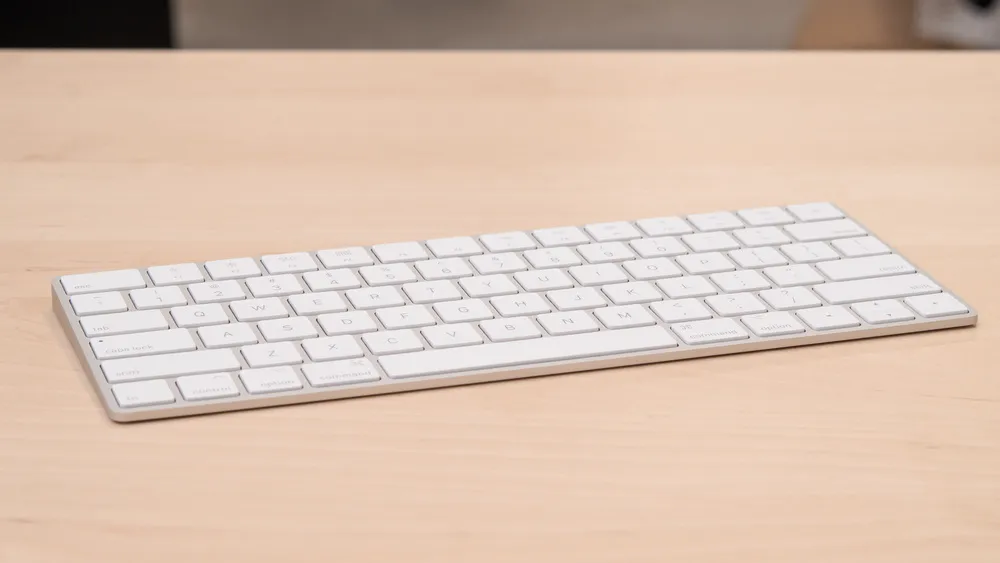
Magic keyboards are designed to make typing more accessible and more efficient. They feature keys that can be adjusted to different heights and angles.
They also have a built-in trackpad. This eliminates the need for a separate mouse. It can further help reduce strain on the wrists and fingers.
Magic keyboards can feature backlit keys. This makes it easier to type in low-light environments.
Pros:
- Ergonomic design
- Multi-touch functionality
- Long battery life
Cons:
- Limited customization
- Expensive
- Compatibility issues
9. Backlit Keyboards
Backlit keyboards are keyboards that are illuminated from behind. This allows the user to type in low-light environments.
The keys are usually illuminated with LEDs. The intensity of the light can often be adjusted.
Backlit keyboards are a great way to type in low-light environments. Backlit allows you to easily see the keys, making typing more manageable and accurate.
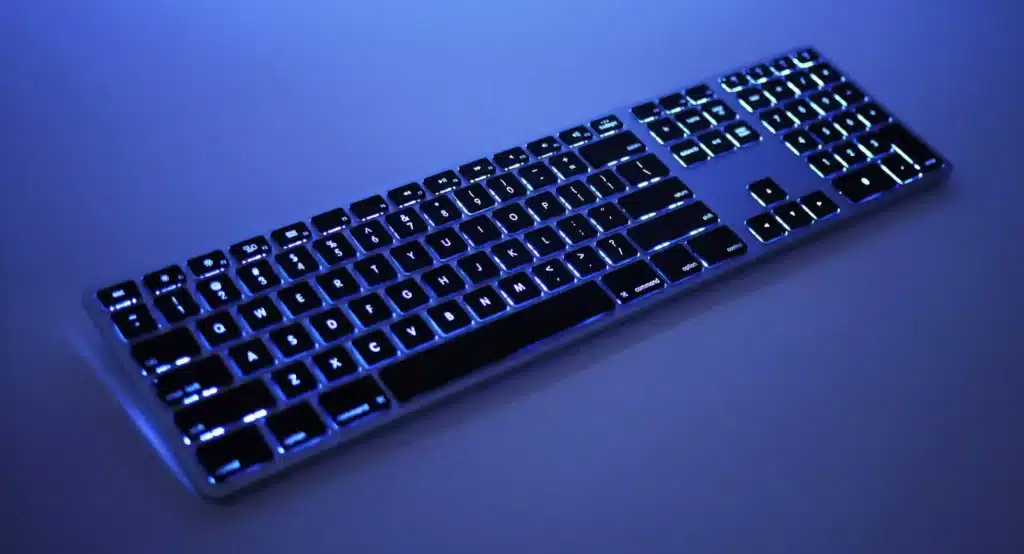
Backlit keyboards are great for gaming. The illuminated keys can help the user quickly find the right keys for a particular action.
Pros:
- Comfortable typing experience, especially in low-light environments
- Helps users quickly identify the correct keys when typing
- Easier on the eyes, reducing eye strain and fatigue
Cons:
- More expensive than regular keyboards
- Requires more power to operate, which can lead to shorter battery life
- Can be distracting in certain environments, such as a library or office
10. Gaming Keyboards
Gaming keyboards are specialized keyboards explicitly designed for the needs of gamers.
They often feature special programmable keys and specialized macro functions. Many include backlit keys and mechanical key switches as well.
Some gaming keyboards even feature LCDs or audio outputs.
Gaming keyboards are designed with the specific requirements of gamers in mind. They often feature dedicated gaming keys that provide a comfortable, customized experience.
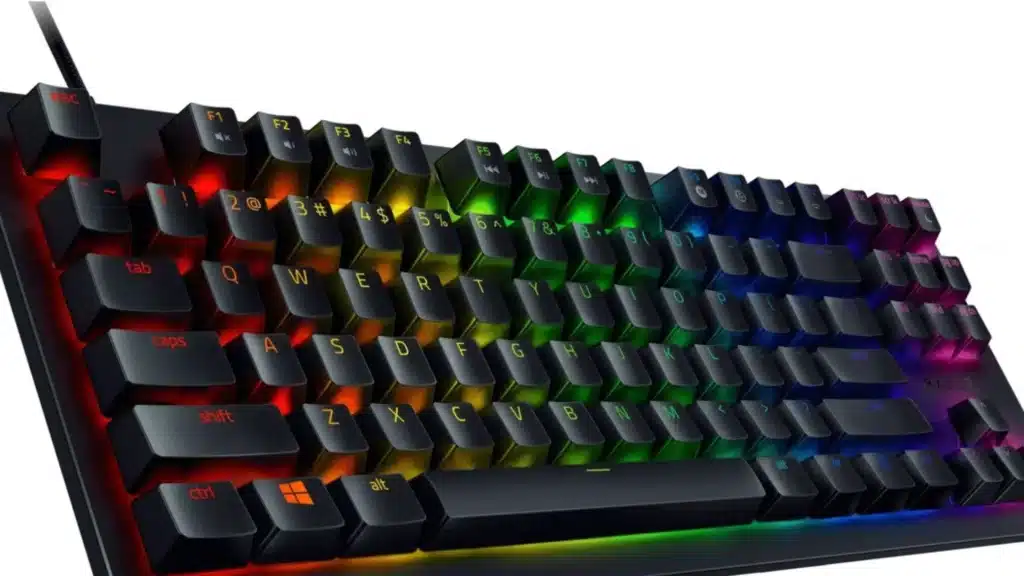
Gaming keyboards often have backlighting and different color schemes. They can feature adjustable response times as well as additional macro keys.
This makes them ideal for gamers who want to tweak their gaming setup to their needs.
Many gaming keyboards are designed to be more durable. They have longer keystrokes and reinforced construction for added longevity.
Pros:
- Designed for maximum comfort
- Highly customizable
- Includes advanced anti-ghosting technology
Cons:
- More expensive than standard keyboards
- Bulky and take up more space on a desk
- Not comfortable for non-gamers
11. Flexible Keyboards
Flexible keyboards are designed for portability, durability, and flexibility. These keyboards can be bent, folded, rolled, or manipulated to fit into various spaces.
They are often made from rubber or silicone. These keyboards are usually waterproof, dustproof, and shockproof.
Flexible keyboards are ideal for use when a standard keyboard may not fit. They are great in tight spaces or wet environments.
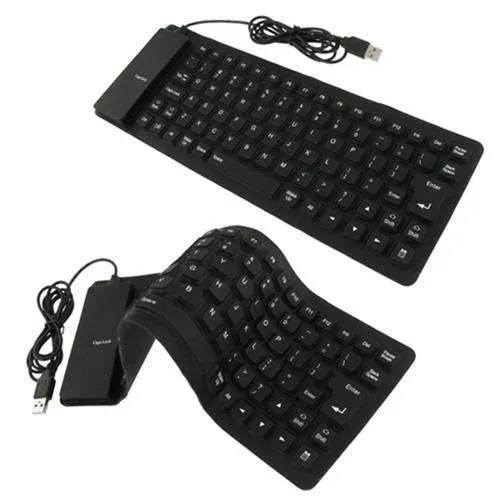
Flexible keyboards are ideal for people who often travel with their computer or laptop. This is because they are lightweight and compact.
They are also great for people who have limited mobility. You can customize the keyboard‘s shape to fit their specific needs.
These keyboards are more durable than conventional keyboards. They often have waterproof surfaces, making them ideal for harsh environments.
Pros:
- Portable and lightweight
- Greater comfort for users
- Can be used in tight spaces
Cons:
- Keys may be too small for some users
- Can be challenging to type on
- It may not be as durable as a traditional keyboard
12. Membrane Keyboards
Membrane keyboards use a thin, flexible membrane beneath the keys. This type of keyboard is quieter and more affordable than mechanical keyboards.
But they are generally considered to be less responsive and durable.
Membrane keyboards are typically more affordable than other types of keyboards. This makes them a popular choice for budget-conscious shoppers.
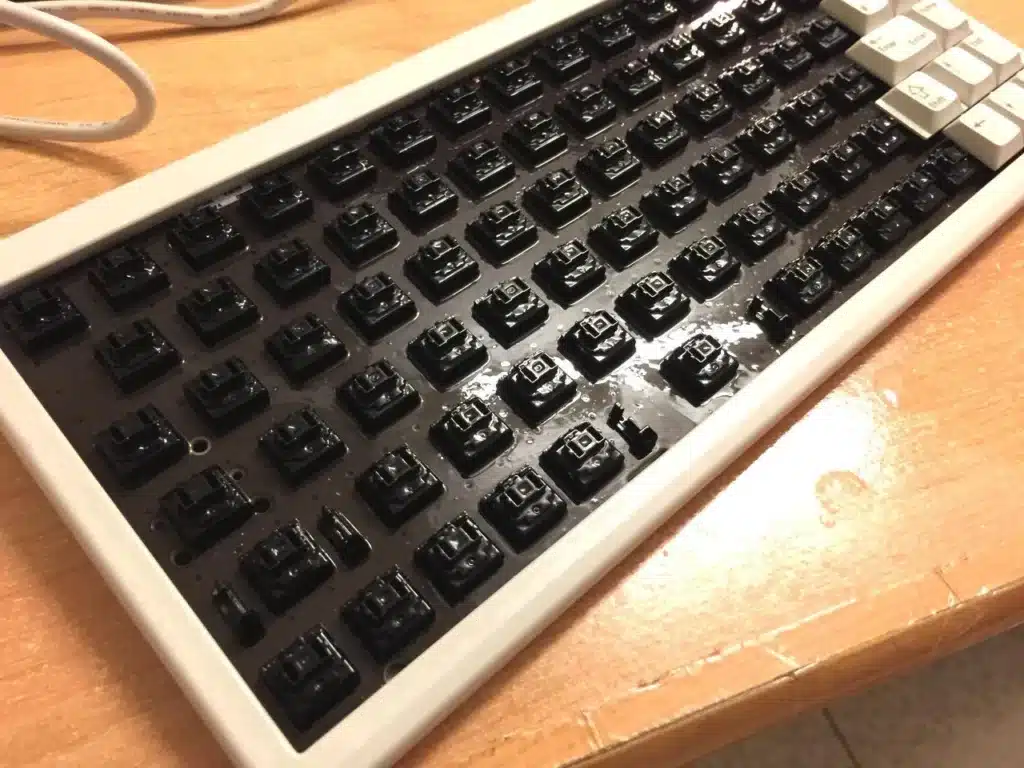
They are also relatively quiet, making them great for environments where noise is a concern. Membrane keyboards are lightweight and thin.
This aids portability. They are typically spill-proof for environments where liquids may be spilled.
Pros:
- Quieter than standard mechanical keyboards
- More affordable than mechanical keyboards
- More resistant to dirt and dust than mechanical keyboards
Cons:
- Less responsive than mechanical keyboards
- No tactile feedback
- Less customizable than mechanical keyboards
13. Mechanical Keyboards
Mechanical keyboards use individual switches beneath each key.
This allows for more precise and tactile typing, as each key has its switch. Mechanical keyboards are considered durable, reliable, and accurate.
Mechanical keyboards offer a more tactile feel with each keypress.

This can help improve typing accuracy and speed.
They are generally more durable and require less maintenance than other keyboards. They also often have better key customization options.
Pros:
- Increased accuracy and precision due to mechanical switches
- Increased durability
- Improved feedback and tactile feel.
Cons:
- Generally more expensive than other keyboards
- It can be louder than other keyboards
- Heavier than other keyboards
14. Multimedia Keyboards
A multimedia keyboard offers additional functions beyond those of a standard keyboard. These include multimedia keys: play, pause, stop, rewind, fast forward, and volume control.
Internet keys like search, home, and email are also included. These keyboards are often designed with ergonomic features. This helps make typing more comfortable.
Multimedia keyboards are designed to provide enhanced functionality for computer users. They feature keys to control media playback, launch applications, and special access functions.
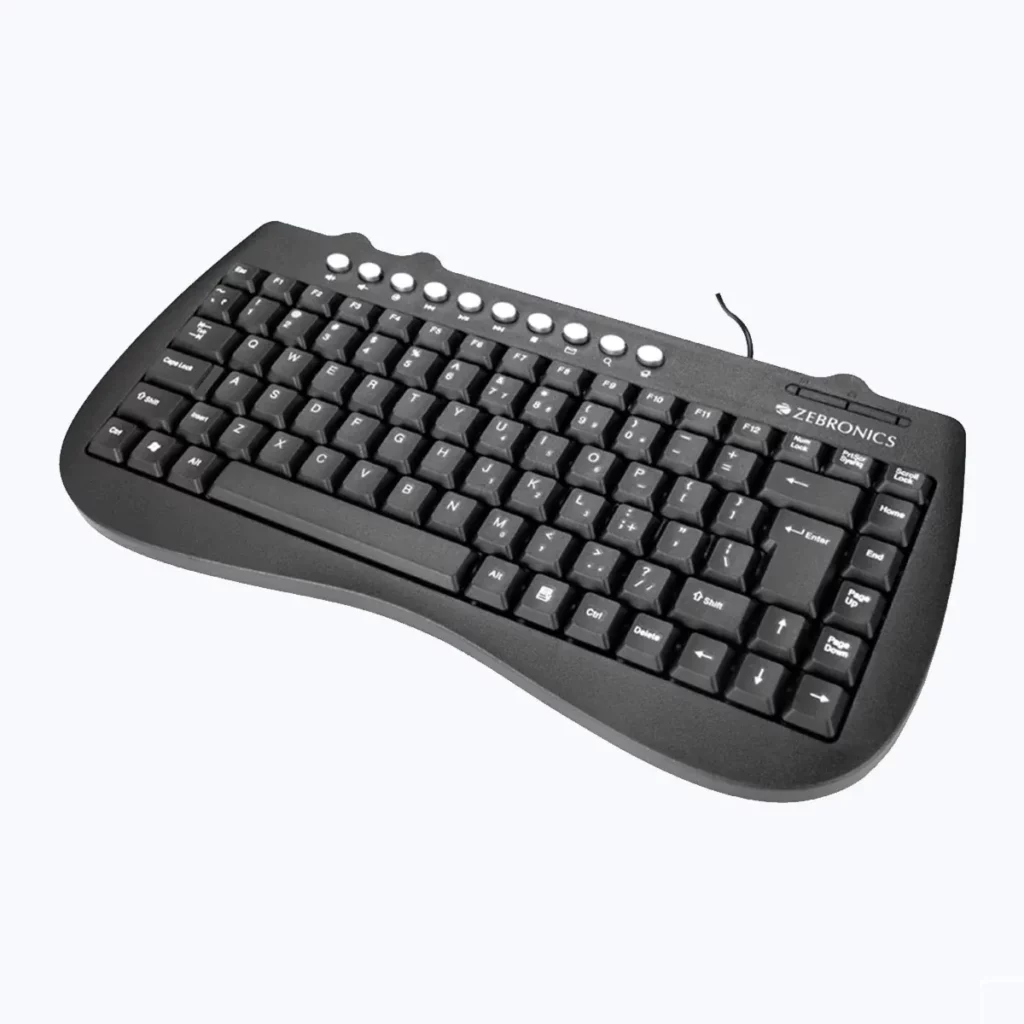
They are especially beneficial for gamers and media creators. Other users who need to access specific functions or media controls quickly can also use them.
This keyboard can feature backlighting, letting you work comfortably in low-light environments.
Pros:
- Can provide faster access to commonly used features and functions
- Includes a wide range of customizable hotkeys, allowing users to launch applications or open files quickly
- Well-built and can last for a long time
Cons:
- More expensive than regular keyboards
- Can be bulky and take up extra desk space
- May not be compatible with certain operating systems
15. Chiclet Keyboards
A Chiclet keyboard is a type of laptop keyboard. It has flat, rectangular keys with rounded corners, similar to a pack of chewing gum.
It is usually found on laptops and ultra-slim desktop computers. Chiclet keyboards are designed to provide a more comfortable typing experience. They have a sleeker, more modern look than traditional keyboards.

A chiclet keyboard features low-profile, flat keys with a small gap between them. This style of keyboard is famous for its slim design.
It allows for thinner laptop designs. Its quiet operation makes it ideal for a variety of applications.
These keyboards offer a comfortable typing experience. This makes them a popular choice for both professional and everyday use.
Pros:
- Larger keycaps
- Increased durability
- Quieter
Cons:
- Expensive
- Limited functionality
- Lack of tactile feedback

The above fifteen keyboards all have their own advantages. If you are not only satisfied with the typing experience of the keyboard but also have requirements for their appearance, it is a good idea to decorate them with Custom Stickers. By adding your favorite elements and colors to customize your unique stickers.
How to Choose the Perfect Keyboard for Your Needs
Choosing the perfect keyboard involves several considerations:
Identifying Your Needs: Work, Gaming, or Everyday Use
- Work: Look for keyboards with ergonomic design, good tactile feedback, and possibly wireless connectivity for office flexibility.
- Gaming: Opt for keyboards with customizable backlighting, macro keys, and high-precision switches for enhanced gaming performance.
- Everyday Use: Consider keyboards with a balance of comfort, durability, and affordability.
Considering Ergonomics and Comfort
- Ergonomic Design: Look for keyboards that reduce finger stretching and alternating hand use.
- Wrist Rests: Consider keyboards with built-in wrist rests for added comfort.
- Adjustable Height: Some keyboards offer adjustable height settings to accommodate different typing positions.
Looking at Connectivity Options: Wired, Wireless, and Bluetooth
- Mechanical Keyboards: Known for their tactile feedback and durability.
- Membrane Keyboards: More affordable and quieter than mechanical keyboards.
- Ergonomic Keyboards: Designed to reduce strain and improve comfort.
- Wireless Keyboards: Offer flexibility and convenience.
- Gaming Keyboards: Feature customizable backlighting, macro keys, and high-precision switches.
Frequently Ask Questions (FAQs)
Ques 1: What are the two main types of keyboards?
Ans: Basic and extended are the two significant keyboards. Standard keyboards have 104 keys for performing all the essential functions.
Extended keyboards have more than 104 keys and are used mainly by gamers or professionals.
Ques 2: What is the most common keyboard?
Ans: QWERTY keyboard layout is considered the most common layout for a keyboard.
It is present mostly in all laptops and is recognized by the first letters as “QWERTY” in the alphabetical row of the keyboard.
Ques 3: Which keyboard is better, AZERTY or QWERTY?
Ans: Qwerty layout is considered better as they are pretty standard and designed specifically for the English language. Even gamers prefer the “WASD” placement regarding query keyboard layout.
Ques 4: What are flat keyboards called?
Ans: Flat design is also another name for chiclet keyboards. They are usually found on super compact laptops like Apple Macbooks.
Conclusion
Keyboards vary depending on their intended functionality.
So, the best way to choose one is to know your needs. The multimedia keyboard works if you are into music and want to tinker with songs.
If you are a gamer, a taut gaming keyboard is as good as none.
Once you know what you need the keyboard for, the rest becomes easier to pick from!




